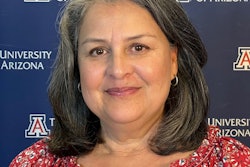SANTA ANA, CALIF.
In the 1940s, Gonzalo and Felícita Mendez wanted their three children to attend the school nearest their farm, which was the 17th Street Elementary School in Westminster. After all, the school was cleaner and had better facilities than the dilapidated schools that Mexican children had to attend.
California, at the end of World War II, experienced a surge of Mexican immigrants — as many as 120,000. But in the Westminster, Orange County, El Medina, Santa Ana, and Garden Grove districts, children of Mexican ancestry, even if they were U.S. citizens, were not allowed to attend the “White” schools.
Dr. César Ayala, associate professor of sociology at the University of California, Los Angeles and author of the article “Felícita La Prieta Mendez and the End of Latino School Segregation in California,” recently published in the Centro Journal, notes that a quarantine initiated at the U.S.-Mexican border “reflected the belief that Mexicans were diseased and dirty.”
Public school district trustees in Southern California internalized this belief, as the Mendez family would soon find out. On the first day of school in September of 1944, when Soledad Vidaurri, the Mendez children’s aunt, brought her three children and the Mendez children to the 17th Street Elementary School, half of them were denied entry.
Gonzalo Mendez Jr. remembers what the school officials said to his aunt. “They told her, ‘We’ll take those three, but we won’t take those three,’” he says, and the reason being, “We were too dark.”
Vidaurri’s husband was Mexican with French ancestry, thereby passing on his light complexion and French surname to his children, who were viewed as White. The Mendez children — with their brown skin and Hispanic last name — were classified as “Mexican,” even though they were actually half Puerto Rican and half Mexican. They were turned away from the all-White school.
*
But the Mendez children weren’t the only children turned away. The Estrada, Guzmán, Palomino and Ramirez families saw the need to end segregation, too. With Gonzalo and Felícita Mendez (Felícitas to family and friends), the families filed a classaction lawsuit in 1945 on behalf of more than 5,000 Mexican American students in Orange County.
Sylvia Mendez, a daughter of Gonzalo and Felícita, says current students are often surprised to hear that California schools were segregated.
“In colleges, the students wonder why they haven’t been told this part of history. They can’t believe that California was segregated like the South,” says Mendez.
A Precursor to Brown
As plaintiffs in the case, Mendez v. Westminster School District, the Mendez family proved to be a driving force, dishing out a majority of the money to hire attorney David Marcus who had successfully argued a case to allow Mexicans and Puerto Ricans use of public swimming pools and parks in San Bernardino, Calif.
As their case progressed, the Mendez family and the other plaintiffs would get support from a wide range of civil rights organizations, including the League of United Latin American Citizens (LULAC), which would turn out to be a major fundraising vehicle. LULAC declined to get involved initially.
“They (LULAC) had taken another segregation case to court in the 1920s and lost. They had a terrible result, and were really shy in taking this case on,” says Chris Arriola, a deputy district attorney in Santa Clara, Calif., who wrote an article about the Mendez case for La Raza Law Journal. “They thought it was better to pressure the school board or the city of Santa Ana to do the right thing, rather than sue them.”
In trial, the plaintiffs were supported by civil rights organizations such as the American Jewish Congress, the American Civil Liberties Union, National Lawyers Guild, Japanese American Citizens League and the National Association for the Advancement of Colored People, all of which submitted amicus briefs to the court in favor of the Mendez family.
*
Thurgood Marshall, who wrote the brief representing the NAACP, later cited key legal points from the Mendez case during his argument in Brown v. Board of Education, which would ultimately lead to the desegregation of all U.S. schools. The key points Marshall referred to included application of the 14th Amendment, which requires states to grant equal protection to citizens and non-citizens who live within their jurisdiction, and sociological and anthropological research showing evidence that all races are equal.
“Segregation made the children feel inferior, when inferiority did not exist,” says Arriola, adding that the school board trustees argued that the Mexican American children were segregated due to poor English language skills and poor hygiene. “They were doing well and they should have been in an integrated school. There was no legal basis for the segregation, and, therefore, it was a violation of the 14th Amendment.” When the U.S. District Court judge ruled in favor of the plaintiffs on Feb. 18, 1946, school board trustees appealed the case, only to be defeated again in the 9th Circuit of Court Appeals on April 14, 1947.
Raising the Mendez Profile
Both Brown v. Board of Education in 1954 and Mendez v. Westminster were landmark legal decisions, which forever altered American education. The outcome of the Mendez case resulted in California becoming the first state in the nation to desegregate its schools. But because, unlike Brown, this case never went before the U.S. Supreme Court, it is not as well known.
Dr. Gilbert González, professor of social sciences at the University of California, Irvine, explains why it took 60 years for this case to gain national attention.
“It doesn’t become an important part of national history until the Mexican community becomes interested in studying their own history,” he says. “The only people that were interested in the Mexican community in the 1930s and 1940s were a few sociologists, and a handful of anthropologists. They were looking at the community from the perspective, ‘How can we deal with these people?’”
González says that it wasn’t until the 1960s and ’70s that the Mexican American community became “conscious of itself through the political actor” and started writing down its own history.
To commemorate the 60th anniversary of the landmark case, the U.S. Postal Service in September dedicated a Mendez v. Westminster stamp at the Gonzalo and Felícitas Mendez Fundamental Intermediate School in Santa Ana, Calif., which opened in 1998, to honor the Mendez family. Other commemorations were held earlier in the year as well. In April, Chapman University in Orange, Calif., held the official stamp unveiling where plaintiffs of the Mendez case were on hand.
Thurgood Marshall Jr., son of the famed civil rights attorney and Supreme Court justice, was in attendance at the September event as a member of the U.S. Postal Services’ Board of Governors.
“On one hand, the Mendez family was trying to do the right thing for the families, but in fact they were doing the right thing for all Americans,” Marshall says. “It’s a remarkable testament to the power of individuals and communities to be able to come together and make a difference.”
The effort to acknowledge and raise the profile of this 60-year-old case has even resulted in an award-winning documentary.
Filmmaker Sandra Robbie, who first read about the case 10 years ago in a newspaper article, has since produced the Emmy Award-winning “Mendez v. Westminster: For All the Children/Para Todos los Ninos.”
Now, Robbie and Sylvia Mendez spread the word through speaking engagements at elementary schools, high schools, and colleges and universities throughout the country. They’ve even made appearances at the Smithsonian and the White House. But most importantly and hopefully longer lasting, they are encouraging California schools to include this case in state history curricula taught at the fourth- and fifth-grade levels. Sylvia Mendez is lobbying state politicians to mandate the case be included in history books.
When she speaks to elementary and high school students, her message is simple. “I tell them, ‘education did not come easy for you, people have been fighting all their lives for equal education,’” Mendez says, adding that even some younger members of her family need to hear that message. “I have some nieces that have a high school diploma only, and are working at McDonald’s.”
Mistala Mendez-Mooney, a granddaughter of the plaintiffs, says the case is “humbling,” because people forget extreme racism existed and not that long ago. If knowing the history of the case doesn’t inspire other Latino students, it certainly inspired her.
“It would be a dishonor to my grandparents not go to college, and not get the most out of school,” says Mendez-Mooney, who graduated from California State University at Fullerton. “Then, what did they fight for? They didn’t fight just for their three children; they fought for me, too.” D
–Molly Nance
There are currently 0 comments on this story.
Click here to post a comment
© Copyright 2005 by DiverseEducation.com















